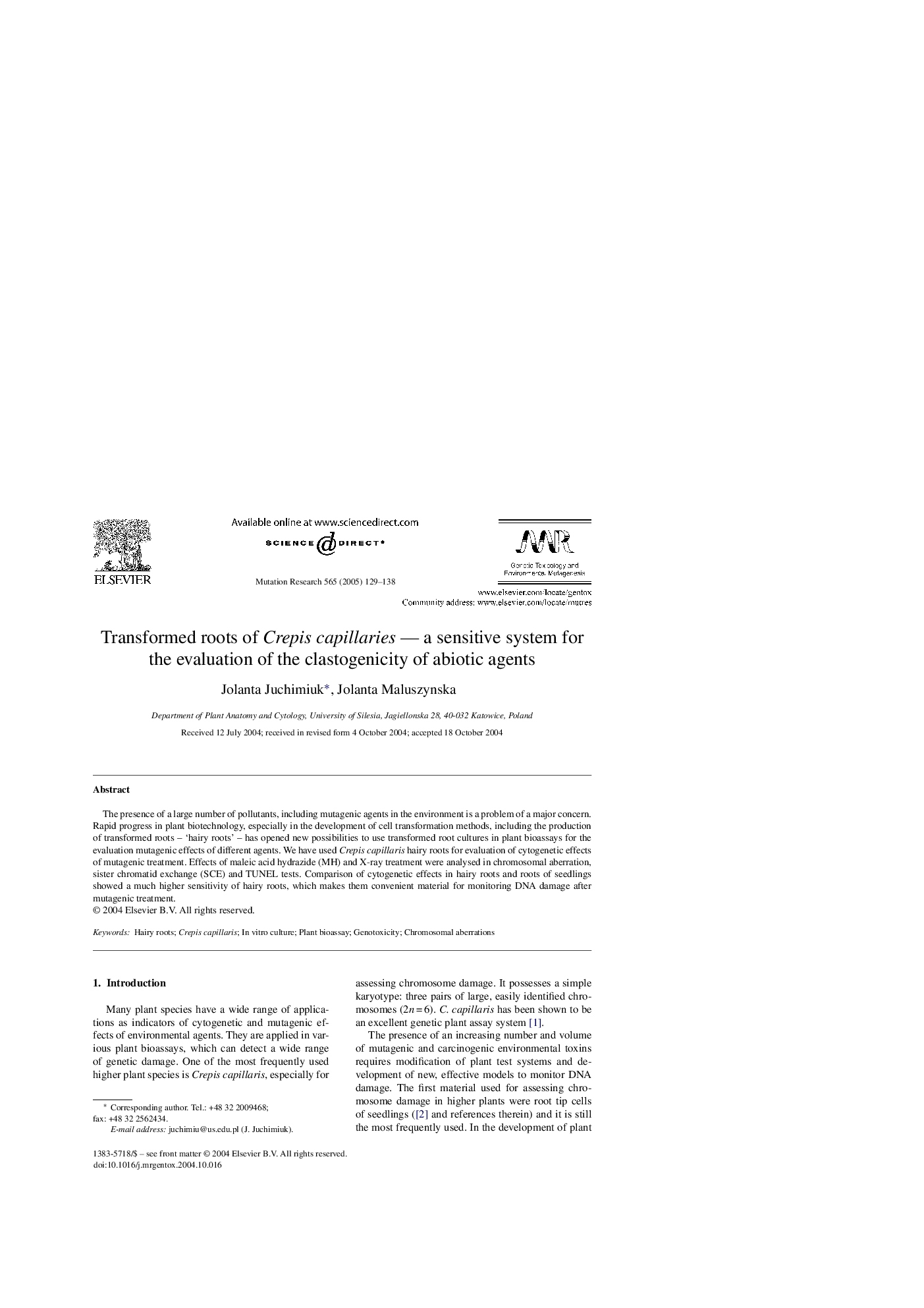| Article ID | Journal | Published Year | Pages | File Type |
|---|---|---|---|---|
| 9910193 | Mutation Research/Genetic Toxicology and Environmental Mutagenesis | 2005 | 10 Pages |
Abstract
The presence of a large number of pollutants, including mutagenic agents in the environment is a problem of a major concern. Rapid progress in plant biotechnology, especially in the development of cell transformation methods, including the production of transformed roots - 'hairy roots' - has opened new possibilities to use transformed root cultures in plant bioassays for the evaluation mutagenic effects of different agents. We have used Crepis capillaris hairy roots for evaluation of cytogenetic effects of mutagenic treatment. Effects of maleic acid hydrazide (MH) and X-ray treatment were analysed in chromosomal aberration, sister chromatid exchange (SCE) and TUNEL tests. Comparison of cytogenetic effects in hairy roots and roots of seedlings showed a much higher sensitivity of hairy roots, which makes them convenient material for monitoring DNA damage after mutagenic treatment.
Keywords
Related Topics
Life Sciences
Biochemistry, Genetics and Molecular Biology
Cancer Research
Authors
Jolanta Juchimiuk, Jolanta Maluszynska,
